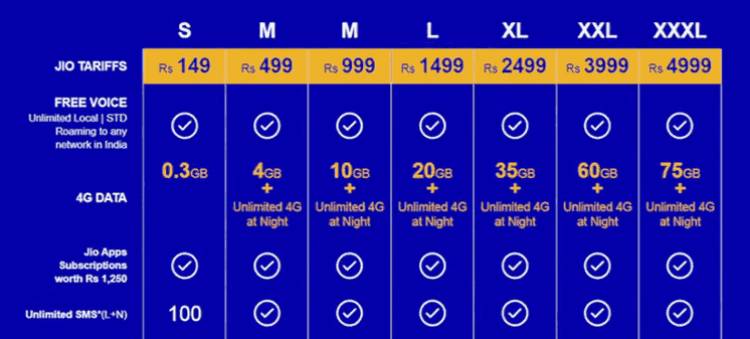Will Reliance Jio be a Sustainable Business Model in a Country like India?
RIL (Reliance Industries Limited) is an Indian conglomerate; it owns businesses across India in sectors such as oil, petrochemicals, textiles, natural resources, retail, telecommunications; it was founded in 1966 by Shri Dhirajlal Hirachand "Dhirubhai" Ambani and is currently run/owned by his son Shri Mukesh Dhirubhai Ambani. RIL is the 3rd most profitable company in India, the 2nd for INR 4800 Cr. Infotel Broadband Services Limited was renamed Reliance Jio Infocomm Limited (RJIL) in January 2013.

Will Reliance Jio be a Sustainable Business Model in a Country like India?
Introduction
RIL (Reliance Industries Limited) is an Indian conglomerate; it owns businesses across India in sectors such as oil, petrochemicals, textiles, natural resources, retail, telecommunications; it was founded in 1966 by Shri Dhirajlal Hirachand "Dhirubhai" Ambani and is currently run/owned by his son Shri Mukesh Dhirubhai Ambani. RIL is the 3rd most profitable company in India, the 2nd for INR 4800 Cr. Although not listed, IBSL was the only company to gain broadband spectrum in all 22 zones in India at the 4G auction that took place earlier that year. Later as a telecommunications unit of RIL, Infotel Broadband Services Limited was renamed Reliance Jio Infocomm Limited (RJIL) in January 2013. RJIL, which is doing business as Jio, is an LTE mobile network provider in India. It is a wholly-owned subsidiary of Reliance Industries, headquartered in Mumbai, which offers a cellular 4G LTE service network (without 2G/3G related services) and is the only 'VoLTE-only' (Voice over LTE) provider in a world that lacks 2G and 3G legacy network support. The offerings were first beta-launched to Jio's associates and employees in December 2015 and then commercially launched in September 2016.
Business Model

After looking at the attached graphic, if we remove unrestricted night data (and wifi data that many of us do not have access to the price per GB of these plans is within the range of INR60 to INR125 per 1GB. If you are someone who uses 5GB of data per month and you are actually paying INR1000 every month with current providers, you would be delighted to get the same volume of data for INR500. Yet you are likely to lose the same amount of money over time and spend 10GB of data on INR1000 instead. This is because the 4G speeds are great, and now there are a lot of places to invest the info. And because you've got a budget for it, you're sure to pay more. So even if you're having a lot more value than the current operator, JIO can only make the same/better revenue relative to the established competitors.
The angle of the RIL – If you do the math, you will be able to know that even if 25 per cent-30 % of people in India use 2 GB of JIO internet data every month, then RIL will recover the entire initial investment of $ 22B in just three years.
Key Factors
The largest fibre optic network in India-RIL has developed 250k KMs of high-quality fibre optic cable and constructed over 90k eco-friendly 4G towers. Importantly, Jio uses 288 fibre or 96 fibre cables in most areas, while other players use just 12-24 fibre cables. More fibre means more bandwidth and more speed. This is an incredible achievement for the Indian mobile network industry. Most other companies do not lay down such a large number of cables, instead, they rely on arrangements with numerous other companies that own fibre networks. Apart from this, Jio also has access to Reliance on communications cables.
Technology Angle: Cell towers are like big WiFi. Much as WiFi in your house is wired to the Internet service providers, cell towers need to be linked to fibre optic cables beneath the towers, and these wires need to be connected to big ISPs. So when you use 3G/4G, you only connect wirelessly between your smartphone and the tower. When the data hits the tower, all the data is transmitted via the fibre optic cables. That's why fast fibre network cables are so critical for fast 4G distribution.
Competition Angle: Other service providers also have a 2G/3G broadband network-they only replaced the cell tower with new 4G equipment while focusing on outdated fibre networks-they are concerned about improvements to improved technology since the last time they switched to 3G, they wasted thousands of crores of investment when 3G never produced as much money as they wanted.
RIL Angle: Jio realises that 5G is arriving soon, so they're making their whole fibre optic network so that it can be converted to 5G smoothly tomorrow. Only business with 4G spectrum in All Zones-Because IBSL/JIO was the only company to win broadband spectrum in all 22 zones in India at the 4G auction, it has the capacity to deliver 4G coverage in all 22 circles.
The angle of competition:
-
Bharti Airtel will provide 4G services in 15 circles.
-
The idea will offer 4G coverage in 10 circles.
-
Vodafone will offer 4G coverage in only 8 circles.
The angle of the RIL: JIO will offer 4G services throughout India. The biggest 4G network in India-reach Jio's is greater than the 2G coverage of most other players! Jio has 4G network coverage in over 1,02 Lac Village & 18k Village. JIO plans to cover India as a whole by 2018.
JIO has just 4G-this has multiple advantages for both RIL and consumers. RIL will completely rely on one system instead of retaining 2G+3G+4G at all locations. It's cheaper and they've just got one operation. One irritating issue people face with 3G is that it sometimes moves to 2G immediately. Since Jio only has 4G, one can either get a fast speed internet connection or no internet connection. They still have arrangements with BSNL and Reliance Communications to use their networks to provide 2G/3G at areas not served by 4G.
Massive Investment- RIL has invested $22B (INR150000Cr) in which project-this is almost as much as the big incumbent telecommunications companies, such as Bharti Airtel Ltd, Idea Cellular Ltd and Vodafone India Ltd have spent more than 20 years working in the past.
Competition Angle: this pushes other players to spend more in their own infrastructure-Airtel has already announced that they will invest 60,000 crores to modernise their network.
Technology Angle: RIL owns two international submarine cable landing stations-Bay of Bengal Gateway (JIO is part of this 8000KM long submarine fibre optic cable linking Malaysia and Singapore to Chennai) & Asia Africa Europe One submarine cable system (JIO is part of a 20000KM long cable connecting Europe to Mumbai. This cable has 32-40 terabit per second bandwidth compared to Airtel.
Eco-friendly Towers- RIL has taken the idea of eco-friendly and camouflaged cell towers to India. JIO's towers don't really look like a forest. It's a cell tower that's built to blend into nature and look like a tree. This is achieved in such a way that the normal bulky metallic telephone towers do not harm the natural vision of the site.
The only business in India that uses VoLTE (calls are also sent as data) technology-4G is specifically designed for high-speed data transfer and cannot accommodate regular mobile calls. To solve this dilemma, other players turn to 3G/2G if a call is made. Since Jio doesn't have 2G/3G, it sends calls as data from 4G itself. It's similar to the Skype/Whatsapp calls, but potentially of a much higher quality.
Disruptive Pricing- JIO began offering FREE call+data for about a year. And then moved to send 30GB of data to INR300 FREE Calls every month.
1GB/sec wired Broadband-Jio is not all for 4G-They are now aiming to deliver ultra-high-speed fibre optic connectivity to homes with peak connection speeds of up to 1GBps.
Support
-
As Jio offers 4G data and 4G cell phones at lower prices, most unconnected India can join Jio's user base. Jio Phone subscribers will pay Rs.153/-per month, other users will pay for 4G services. With more subscribers, Jio will be able to make more money.
-
Cable TV and fast broadband speeds have not yet been reached in several remote areas of India. Jio has learned from this and is now delivering these services to rural areas. Jio has now spent roughly Rs.15,000 crores in the fibre optic network. It is extremely doubtful that other telecommunications providers would take this risk to compete with Jio's services. Even if they take the chance, Jio would have the benefit as the first mover.
-
For telecommunications firms, initial spending is high and operating costs are comparatively modest. The Reliance industries have already spent a lot in Jio. It is now in a position to make money at low operating costs.
-
The data rates of Jio's rival are comparatively very high. As a consequence, customers would choose Jio over other networks.
-
Reliance companies have other sources of revenue, such as Jio Applications, Lyf Mobile Phones, 4G Internet networks, etc.
-
Since Jio cable can be attached to any TV, people can save money on a DTH link. Via this move, JioTV is going to get a big customer base.
-
Pre-order Jio Feature phones would help them mass-produce phones. This leads to a low cost of production per piece, resulting in high returns.
Against
-
If Jio's rivals start selling 4G data at low pricing, Jio's price advantage will not exist. When this happens, this business model will not be viable.
-
Only jio applications can be downloaded from the Jio 4G phone feature. This will restrict the options of consumers. They can therefore choose a standard cable link over JioTV.
-
New consumers of smartphones may not choose a 4g phone feature. Since it's a single sim and the one who uses the mobile does not want to keep the jio feature phone as the main phone. They may retain it as a second phone and may not recharge 153 rs per month.
-
Although the monthly cost of JioTV and DTH services is about the same, it is much cheaper to keep a set-top box instead of using a cell phone to watch TV. If DTH services hit remote areas of India, it would be a drawback for the Reliance industry.
Conclusion
RIL/JIO did not leave a stone unturned for this mega project. According to Shri Mukesh Dhirubhai Ambani, India currently ranks 150th out of 230 countries in mobile Internet rankings. He predicts that the ranking of India will rise from 150 to among the top ten mobile Internet rankings in the world as a result of this initiative. We need big corporations like Reliance to invest in such mega-projects for our entire country to make progress.
BY-
Kosha Doshi












